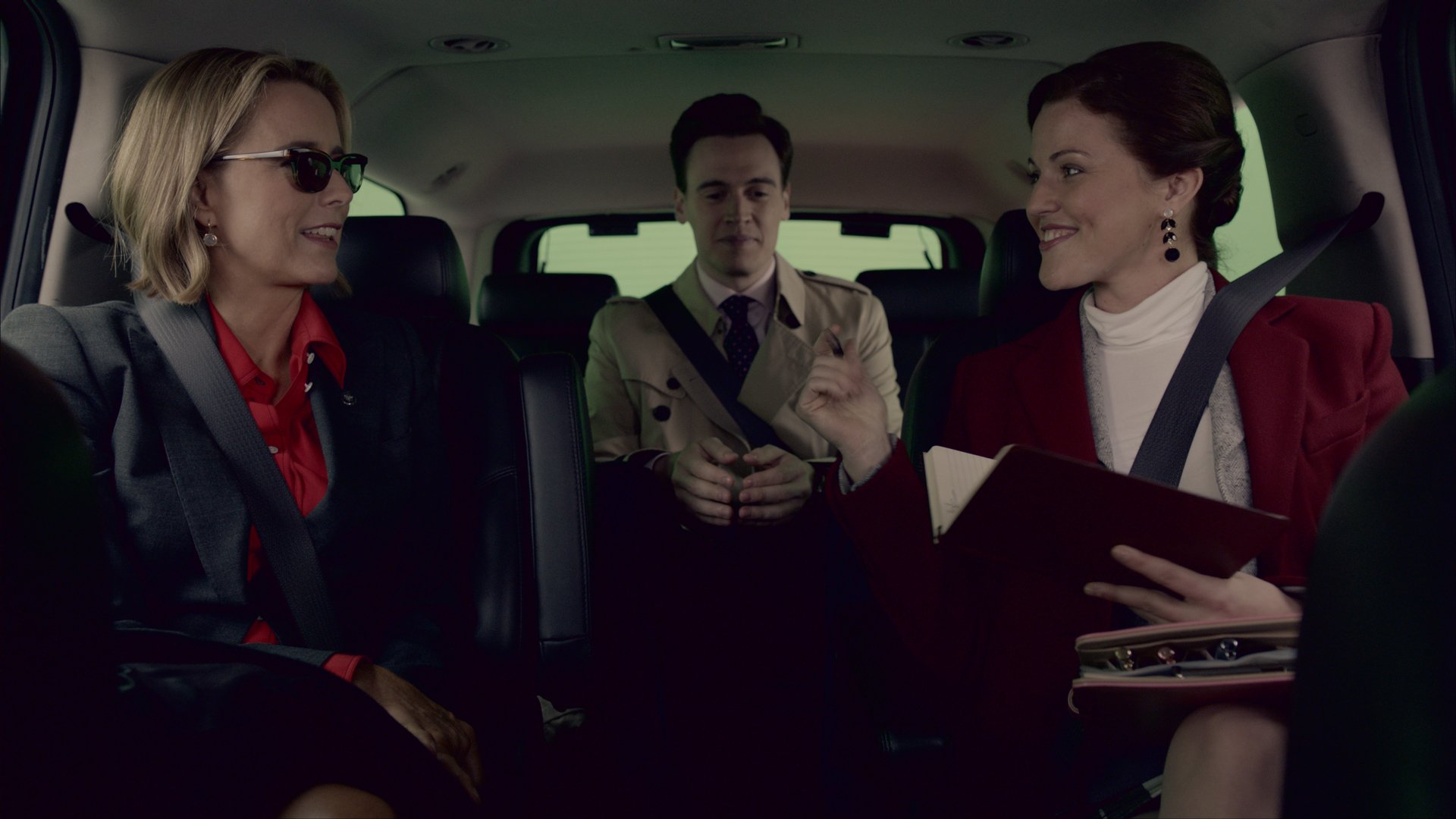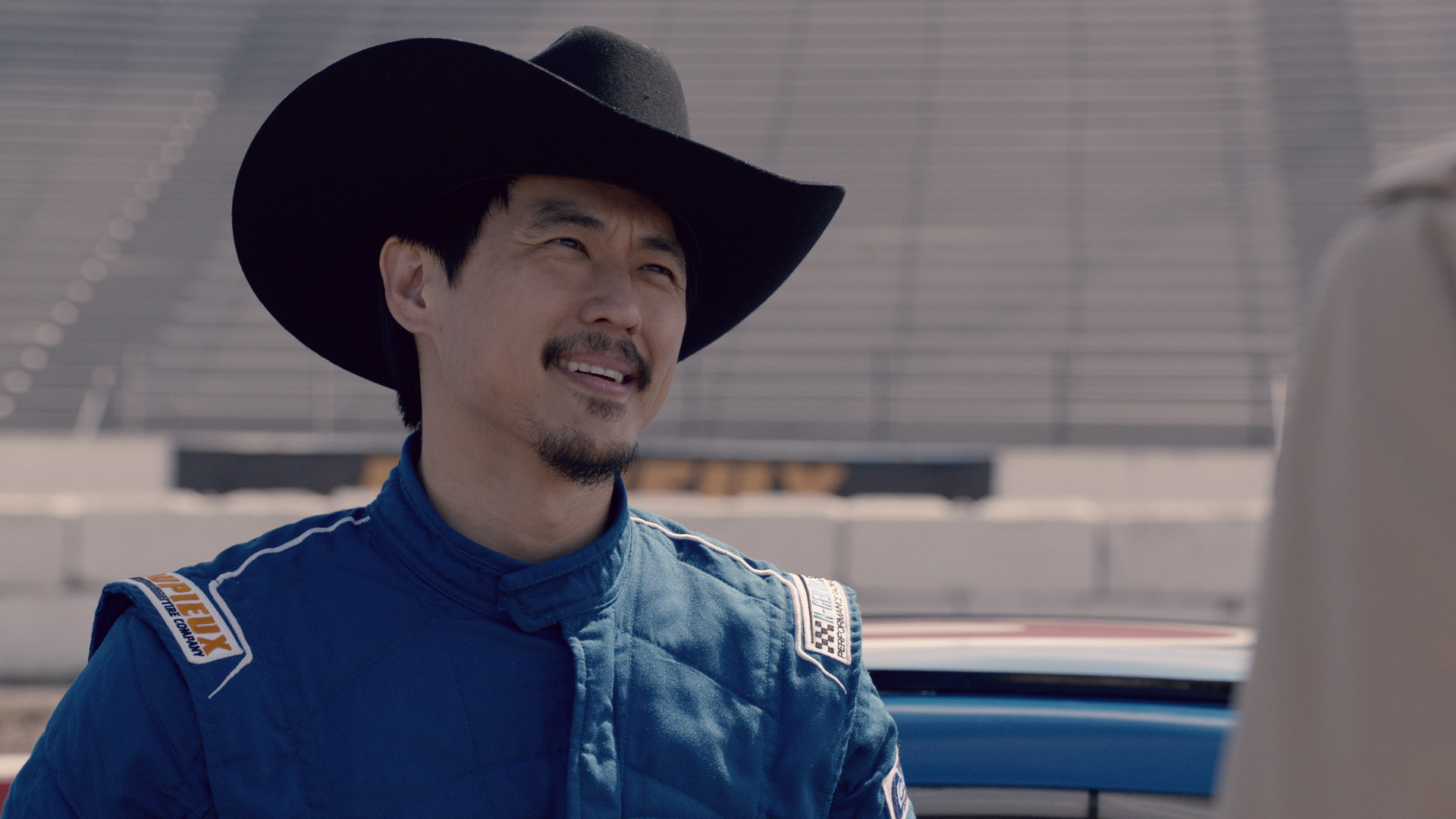"Poor-man's Process"! This scene that I shot for Madam Secretary ep. 409 features a common alternative workflow to either a freedrive or a process trailer, involving a static car and compositing driving plates into greenscreen footage. First, the scene:
We set up the three-sided greenscreen box in the parking lot at the stage. The box is topped with a silk to allow the sun to light the greenscreens while we use various units to suggest ambience and sunlight entering the car itself. The lighting diagram is from memory; please forgive any inaccuracies:
My key light was a 10K through the front window half-topped with a silk to keep the faces softish while feeling harder light in the lower portion of the frame. (All of the following stills are uncorrected frame grabs with the shooting LUT applied.)
Erich Bergen in the back seat had his own special light through the side window which a grip would occasionally pass a solid through to feel some movement.
For the cross-coverage we brought in smaller, lightly-diffused units through the side which did double duty as edge lights and fill.
I shot the driving plates that were comped into the windows on a special trip to Washington D.C., as examined in detail in my previous post.
In the end is this cheaper than a process trailer day? Ask a UPM. It's certainly more controlled, which is nice.












